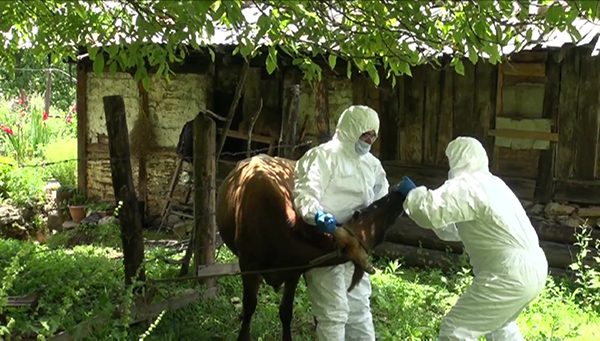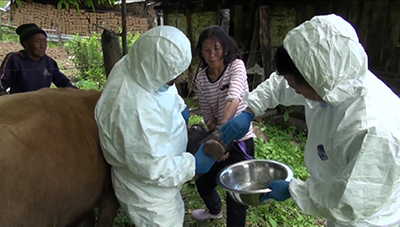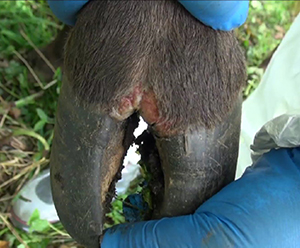 With at least five new cases being reported every day, the number of cattle infected with foot and mouth (FMD) disease in Paro is continuing to rise. The number has now climbed to 160 since the first case was reported in Lamgong Gewog on June 6.
With at least five new cases being reported every day, the number of cattle infected with foot and mouth (FMD) disease in Paro is continuing to rise. The number has now climbed to 160 since the first case was reported in Lamgong Gewog on June 6.
Veterinary officials in Paro described the outbreak as severe with the disease now having affected cattle belonging to 41 households in five of the 10 gewogs in the dzongkhag. The affected gewogs are Dopshar-ri, Doteng, Lamgong, Tsento and Wangchang.
The Dzongkhag Livestock Office has recorded 10 cattle deaths as of yesterday.
To prevent the disease from spreading further, the Dzongkhag administration, since last week, banned the sale of dairy products originating from the affected gewogs.
 “The ban is crucial because the disease is mainly spread through the movement of animals, which is banned, and secondly through the movement of the livestock products such as milk, butter and cheese,” said Dr. Kinley Penjor of the Bhutan Agriculture and Food Regulatory Authority (BAFRA).
“The ban is crucial because the disease is mainly spread through the movement of animals, which is banned, and secondly through the movement of the livestock products such as milk, butter and cheese,” said Dr. Kinley Penjor of the Bhutan Agriculture and Food Regulatory Authority (BAFRA).
“The virus remains in the milk and other products. So when you move the product and when other susceptible animals come in contact with it, they pick up the infection,” added Dr Kinley Penjor.
The ban has affected dairy farmers who sell milk to other dzongkhags. About 5,000 liters of milk are left unsold every day. “I usually sell about 14 liters of milk every day,” said Dechen Wangmo, one of farmers. “We have also not been able to sell butter and cheese,” she added.
A Senior Veterinary Officer with the Regional Livestock Development Center in Tsimasham, Chhukha, Dr. Chundu Dorji, said the disease can only be prevented through vaccination. “One reason for the outbreak of the FMD is that people are reluctant to vaccinate their cattle,” he said.
“Only about 20% are vaccinated. That’s why today we have so many cattle infected, which has left the farmers not being able to sell their dairy products,” added Dr. Chundu Dorji
As part of Foot and Mouth Disease Containment Program, livestock officers are treating the infected cattle and some are vaccinating livestock that are not infected.
The Bhutan Agriculture and Food Regulatory Authority officials and Dzongkhag livestock office are creating awareness on the disease.
The investigation team is yet to identify the cause of the FMD outbreak in Paro.
About foot and mouth disease
 The foot and mouth disease is a viral disease that affects animals with cloven hooves such as cattle, pigs, sheep and goats. Infected cattle have blisters and erosion in and around the mouth, hooves and on teats, and excessively drools foamy saliva.
The foot and mouth disease is a viral disease that affects animals with cloven hooves such as cattle, pigs, sheep and goats. Infected cattle have blisters and erosion in and around the mouth, hooves and on teats, and excessively drools foamy saliva.
A Senior Extension Supervisor, Ugyen Phuntsho, said it’s important to separate the infected cattle from its herd. “Once the cow is infected, it has to be treated with disinfectant and antibiotics,” he said.
“They also shouldn’t be let out for grazing, and the owner should refrain from visiting places with cattle that are not infected as they can be carrying the virus with them, which can be easily spread to others,” added Ugyen Phuntsho.
The Senior Veterinary Officer with the Regional Livestock Development Centre in Tsimasham, Chhukha, Dr. Chundu Dorji, said FMD is more common among cattle that are left freely to graze in the forest.








